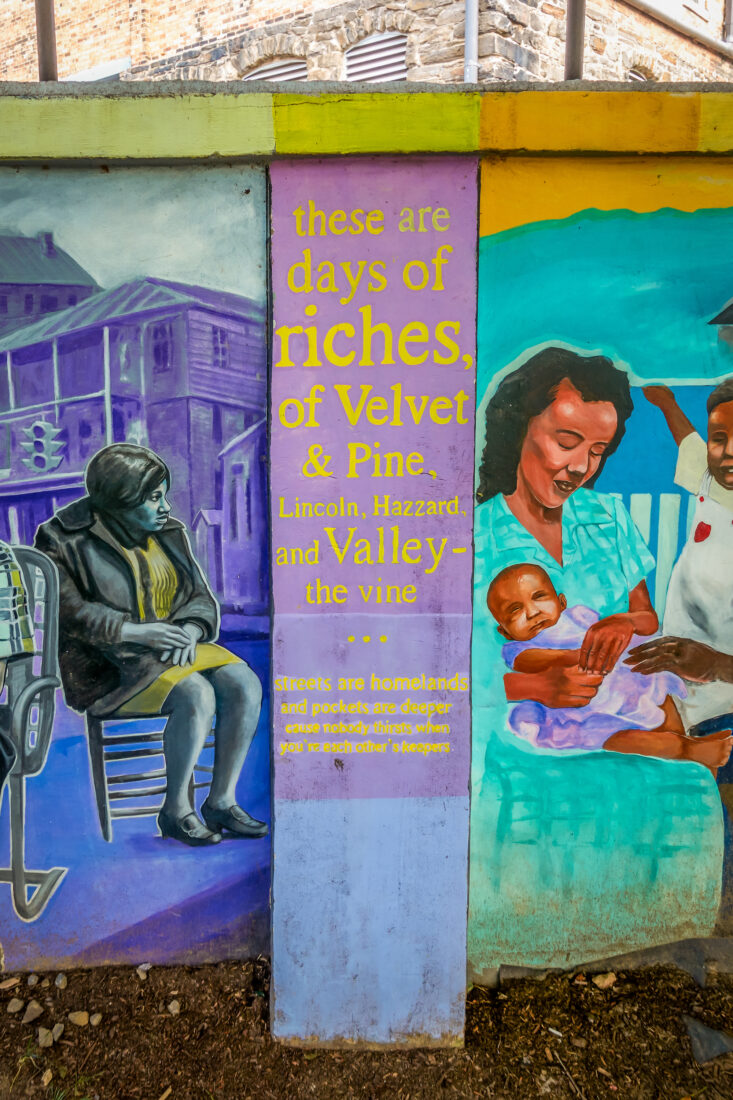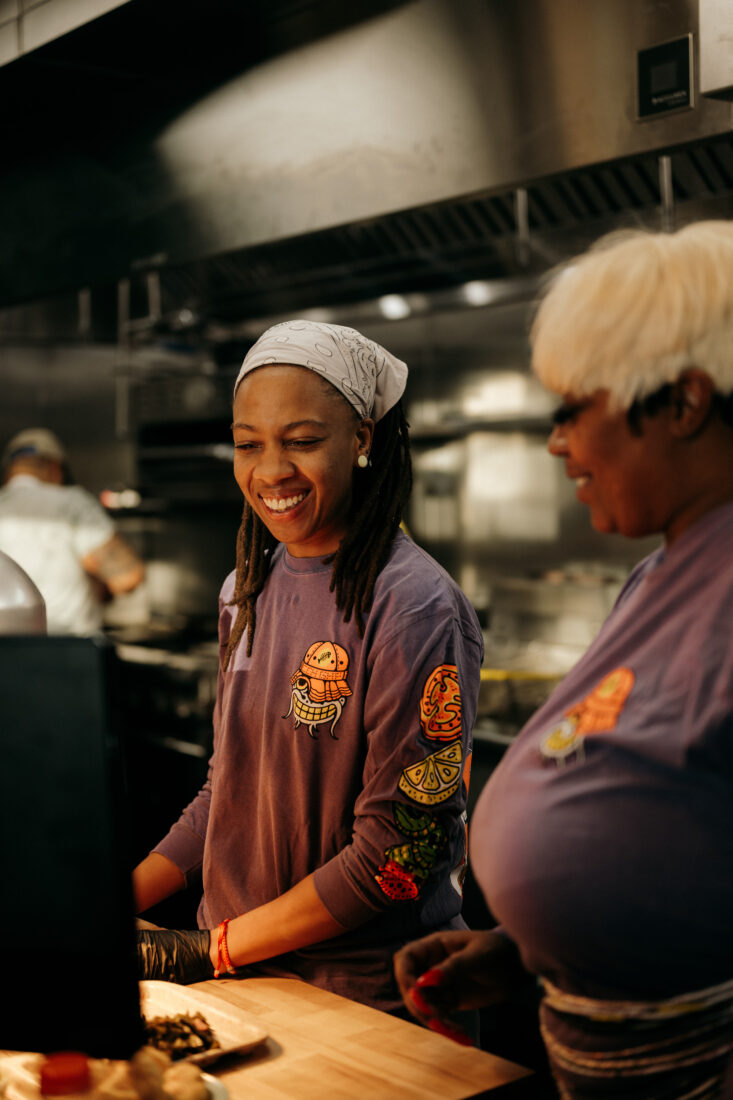Cradled by some of the world’s oldest mountains, Asheville, North Carolina’s rich legacy as a destination for creativity and healing is underpinned by its enduring legacy of Black history intricately woven over centuries and marked by resilience. The newly unveiled Asheville Black Cultural Heritage Trail provides an immersive look at the profound impact of the city’s Black population. This self-guided tour encompasses fourteen stops across three historic Black neighborhoods—Downtown, River Area, and Southside— shedding light on the invaluable contributions of residents in Appalachian culture and shaping Asheville into the remarkable city it is today.
“The design of the trail is an acknowledgment of resilience, entrepreneurship, and care that were evident in the Black community,” Catherine Mitchell says. The community organizer moved to Asheville in 1995 and is an instrumental member of River Front Development Group, an organization that fought to make sure the stories of Black Asheville were documented and preserved in perpetuity. “The trail reveals our stories—from slave narratives through Reconstruction as well as the civil rights movement, up to the modern day,” Mitchell explains.
Every neighborhood includes its own immersive experiences. A half-mile segment of the trail exists in the Downtown section of the city where five informational panels weave a vivid narrative of the ingenuity alongside the city’s galleries, shops, and award-winning restaurants. This section of the trail passes by the YMI Cultural Center, where local business owners once gathered to strategize about how to advocate for equality and press for social change during the civil rights movement. Recently remodeled and set to reopen in June 2024, the meeting space is one of the oldest Black cultural centers in the country and the cornerstone of an area called “the Block,” a swath of Eagle Street where energy from the vibrant community spills out of the buildings and into the streets in the evenings and on the weekends.

“The African American communities were destroyed—they were torn down,” Mitchell explains. “For that reason, it might be challenging to tell someone or take someone where they grew up, because that neighborhood no longer exists. So, highlighting that historical presence and documenting what we do know were important to us.”
Stop number four in Southside is a prime example. It addresses the destruction caused by the National Housing Act of 1934, the formal name for urban renewal policies that uprooted and scattered tightknit communities to disparate edges of town.
But participants will also learn about the joy within the community, including what it was like when Asheville’s first semiprofessional Black baseball team rolled into town. Connecting the past to present are many citizens immortalized on the education panels around town, called “Asheville Icons,” who are still active in their neighborhoods today. People like Matthew Bacoate’s family. Bacoate was integral in ending segregation in entertainment spaces like the city’s bowling alley, and his business acumen was so admired that he was invited to the White House during both the Nixon and Carter administrations to discuss the topic of Black job creation.
As visitors take in this history, there are many opportunities to patronize the fifty-plus Black-owned businesses and events like the monthly Noir Collective AVL’s First Fridays and annual celebrations including Juneteenth, the Afro-Caribbean Goombay Festival, and GRINDFest AVL, a four-day celebration of Black entrepreneurship. It’s easy to find something great to eat while touring as well. Over the years, Ashleigh Shanti, a Top Chef contestant and expert in Black Appalachian foodways, has made significant culinary contributions as chef de cuisine at various restaurants across the region. Now, with her own modern-day fish camp called Good Hot Fish, located adjacent to Burial Beer Co., she is one of Asheville’s new culinary icons. After a bite of Shanti’s shrimp burger, visit nearby cocktail bar Antidote for a taste of the city’s mountain spirits.

Neighborhood institutions like GRIND AVL, a Black-owned coffee shop located in the River Arts District, foster space for locals and newcomers to cross paths, enhancing the vivacity of the city. Inviting accommodations, like the conveniently located bohemian hotel The Radical, offer an ideal resting place when exploring the path.

In this way the Asheville Black Cultural Heritage Trail is not just about what was but what can be. Mitchell believes visitors coming to Asheville will find the Black community’s contributions astounding: “If you are interested in understanding a place as it appears now, let’s tell the story of how this place came to be. This trail is a process of telling the whole story.”
Learn more about the Black Cultural Heritage Trail and plan your trip to Asheville at ExploreAsheville.com









